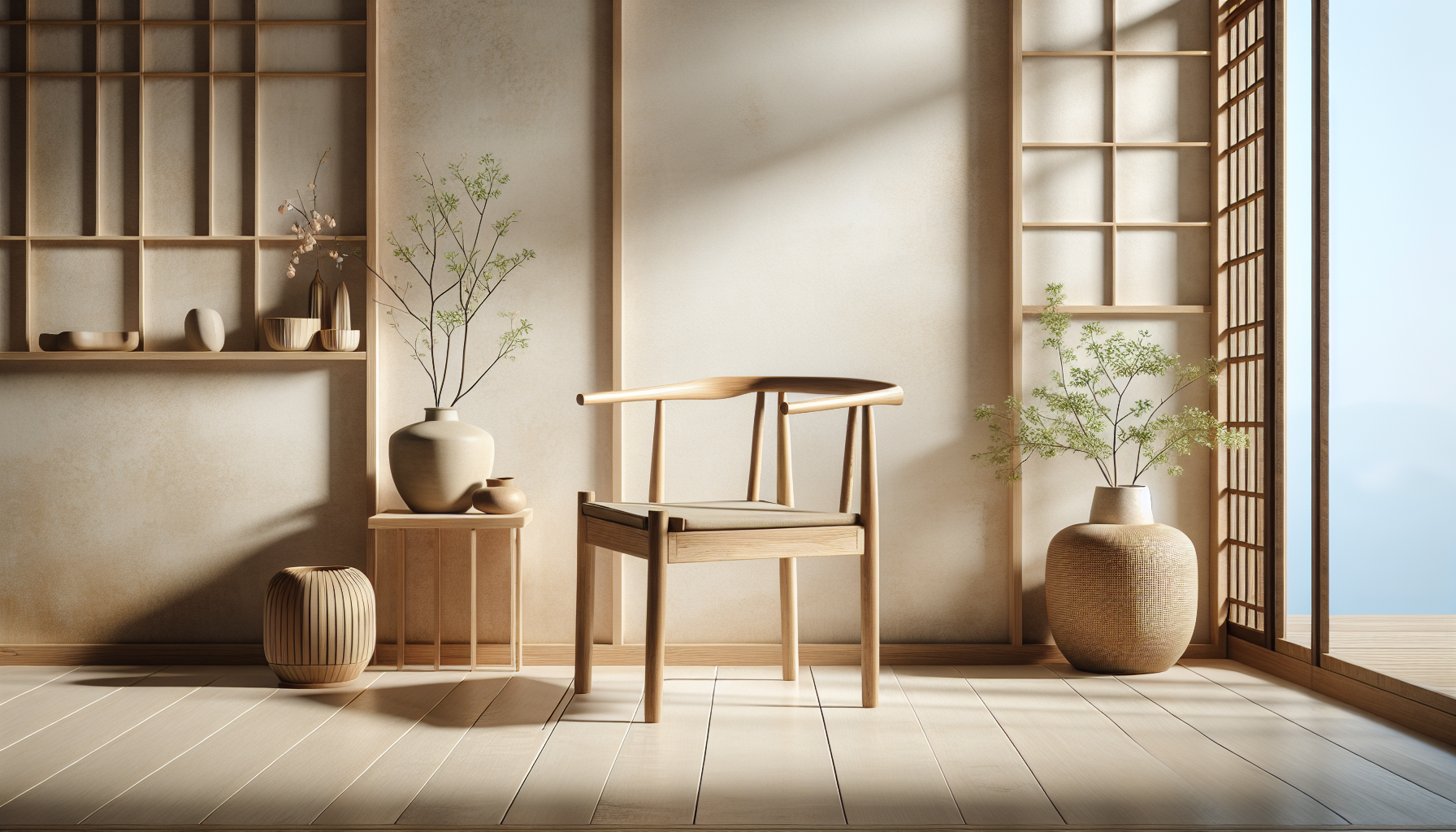Have you ever considered how the way you design your home can impact the environment? It’s a thought that seems to be gaining momentum lately, especially when discussing interiors. One of the most interesting trends that has emerged is the Japandi style, which combines Japanese simplicity with Scandinavian functionality. But can this beautiful aesthetic be fully zero-waste? Let’s talk about it!
Understanding Japandi Interiors
Japandi interiors cleverly blend minimalism from Japanese design with the warmth and coziness associated with Scandinavian living. The result is an elegant, yet functional space that emphasizes natural materials, neutral colors, and clean lines. You might feel a sense of serenity when stepping into a Japandi-inspired room, as every element is purposefully chosen and tends to highlight craftsmanship over clutter.
The Foundations of Japandi Design
At its core, Japandi focuses on craftsmanship, sustainability, and the principle of “wabi-sabi,” which appreciates beauty in imperfection. This aesthetic encourages you to choose items that are both beautiful and functional. By concentrating on quality over quantity, you help create a zero-waste mindset that permeates every area of your home.
The Zero-Waste Concept
But what does zero-waste really mean? The zero-waste philosophy aims to eliminate waste by making conscious choices that reduce, reuse, and recycle. This approach is not just a trend; it’s a lifestyle. When you bring zero-waste principles into your home, you’re committing to a more sustainable way of living.
The Importance of Zero Waste
Embracing zero-waste living can lead to numerous benefits, such as reducing your carbon footprint, saving money, and even enhancing your overall health. Not only does this lifestyle promote the efficient use of resources, but it also leads to more mindful consumption. As you start thinking about how to incorporate zero-waste solutions into your Japandi interiors, you may find yourself asking: How can I create beauty without excess?
Integrating Zero-Waste Practices into Japandi Interiors
Curious about how to marry Japandi design with a zero-waste philosophy? The process can be both enjoyable and rewarding. Let’s chat about several effective strategies to consider.
Choose Sustainable Materials
One of the most impactful ways to create a zero-waste Japandi interior is to select sustainable materials. Bamboo, reclaimed wood, and natural fibers like linen or organic cotton can help you maintain a design that is both stylish and eco-friendly.
Sustainable Materials Examples
| Material | Benefits |
|---|---|
| Bamboo | Fast-growing, strong, and biodegradable |
| Reclaimed Wood | Reduces waste by using existing materials |
| Linen | Made from flax, requires less water to grow |
| Organic Cotton | Grown without harmful pesticides |
By opting for these sustainable materials, you not only enhance the aesthetic of your space but pave the way for a healthier planet.
Invest in Quality over Quantity
In a zero-waste mindset, you’ll be encouraged to invest in high-quality pieces that stand the test of time. This means selecting furniture and decor items that are durable and timeless, rather than trendy and prone to wear.
Making the Investment Worthwhile
When you purchase a chair, for example, think about its utility and how long you envision it in your home. A well-made piece can last for decades, reducing the likelihood of needing replacements. While it may seem like a larger financial commitment upfront, investing in quality can lead to long-term savings and a more cohesive, chic space.
Repurpose and Upcycle
Another fun way to achieve zero waste in Japandi interiors is by repurposing existing items or exploring upcycling projects. Perhaps you have an old piece of furniture that no longer fits your style. Instead of discarding it, consider giving it a new life with a fresh coat of paint or new upholstery.
Creative Repurposing Ideas
| Original Item | Repurpose Idea |
|---|---|
| Wooden crates | Use as shelving units or side tables |
| Old clothes | Turn them into decorative cushion covers |
| Glass jars | Use as plant pots or storage containers |
By thinking creatively about the items you already own, you’ll foster a lovely environment while minimizing waste.
Choose Multi-Functional Furnishings
Multi-functional furniture is a crucial aspect of a zero-waste Japandi space. It allows you to maximize your space without overcrowding. Items like extendable dining tables or ottomans that double as storage help you maintain that clean, clutter-free look characteristic of Japandi design.
Natural Light and Airflow
Emphasizing natural light and air circulation in your design can promote a healthier, happier home. Integrating large windows, skylights, or light-filtering fabrics can harmonize your space while reducing the need for artificial lighting and making it feel more open.
Incorporating Plants for a Zero-Waste Aesthetic
Plants are a beautiful addition to any Japandi interior, and they also tie directly into the zero-waste philosophy. Not only do they enhance aesthetics with their natural elegance, but they also improve air quality and contribute to a calming environment.
Choosing the Right Plants
Opt for plants that are easy to care for and can thrive indoors. Consider sharing cuttings from friends or other plant enthusiasts rather than buying new ones. This not only saves resources but helps build connections and community.
Low-Maintenance Plant Options
| Plant | Benefits |
|---|---|
| Snake Plant | Tolerates low light and requires little water |
| ZZ Plant | Nearly indestructible and thrives on neglect |
| Pothos | Grows easily in various conditions |
Incorporating plants in your design is a step toward sustainability that beautifully complements the Japanese focus on nature.
Emphasizing Minimalism
One of the most beautiful aspects of Japandi design is its dedication to minimalism. By prioritizing a limited number of thoughtful pieces, you let your décor breathe. This principle aligns perfectly with the zero-waste ethos.
Declutter Periodically
A decluttering session can rejuvenate your space, setting the stage for a fresh start. As you go through your belongings, focus on identifying items that you no longer use or love.
Items to Consider Decluttering
| Categories | Suggestions |
|---|---|
| Clothing | Donate or recycle anything unworn |
| Home Decor | Give away excess decorations |
| Kitchenware | Eliminate duplicate or unused items |
By decluttering, you reaffirm your commitment to a zero-waste philosophy, contributing positively to your environment.
Ethical Shopping Practices
In your journey toward a zero-waste Japandi style, prioritizing ethical shopping practices can effectively reduce waste. Seek out brands that focus on sustainability, ethical labor practices, and eco-friendly production processes.
Support Local Artisans
Whenever possible, consider supporting local artisans and small businesses. This enhances your community and often leads to more sustainable choices courtesy of local sourcing. You’ll often discover unique pieces that add a personal touch to your home—all while minimizing your carbon footprint.
Second-Hand Finds
Exploring second-hand stores or online marketplaces can yield amazing discoveries. Not only is this an eco-conscious option, but you can also unearth vintage gems that align beautifully with your Japandi style.
Embracing a Zero-Waste Lifestyle Beyond Interiors
While your focus may be on achieving a zero-waste Japandi interior, remember that this mindset can extend to other areas of your life. Consider your kitchen, bathroom, and overall consumption patterns to incorporate zero-waste principles in a variety of ways.
Eco-Friendly Kitchen Practices
- Bulk Shopping: Buy dry goods in bulk to minimize packaging waste.
- Compost: Create a compost system for food scraps.
- Reusable Storage: Utilize glass containers instead of plastic bags.
Bathroom Solutions
- Refillable Toiletries: Seek out refillable beauty and personal care products.
- Natural Cleaning Products: Replace conventional cleaners with homemade or eco-friendly counterparts.
The Benefits of Embracing Zero Waste in Japandi Style
So, what are the real benefits of intertwining your love for Japandi design with a commitment to zero waste? Let’s highlight some key advantages.
A Harmonious Environment
When you center your design around sustainability, you’ll likely find that your home feels more in tune with nature. Every piece tells a story and reflects care, conscientiousness, and the beauty of simplicity.
Connection to Craftsmanship
Focusing on handmade, sustainably sourced items fosters a greater appreciation for craftsmanship. Each piece in your home can be an expression of respect for artists and the planet, enhancing your overall living experience.
Enhanced Well-Being
Living in a thoughtfully curated environment can have positive effects on your mental health. A peaceful atmosphere supports relaxation and mindfulness, leading to better overall well-being.
Conclusion: Your Zero-Waste Journey
As you embrace the principles of zero waste in your Japandi interiors, remember the journey is just as important as the destination. Every small effort contributes to the larger goal of reducing waste and caring for the environment.
Together, you can create harmonious spaces that reflect beauty and sustainability, all while inspiring others with your mindful choices. The commitment to both style and sustainability ensures that your home becomes a sanctuary, not just for you, but for the planet as well. As you transition into this exciting new chapter, may you find inspiration, joy, and a deep connection to the world around you.

